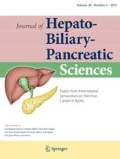Abstract:
Pancreatic β-cells of the islets of Langerhans are the only cells that produce insulin in humans, as well as in most animals, but they have been thought to have a limited capacity for regeneration, which is a predisposing factor for the development of diabetes mellitus. Strategies for influencing the replication and growth of the β-cell mass are therefore important for the prevention and/or treatment of diabetes. We have established a model for islet regeneration in 90% depancreatized rats by the administration of poly(ADP-ribose) synthetase inhibitors such as nicotinamide. The regenerating islets in the remaining pancreas of poly(ADP-ribose) synthetase inhibitor-treated rats were markedly enlarged and consisted largely of insulin-producing β-cells, preventing the development of diabetes mellitus that would otherwise be caused by the 90% pancreatectomy. In screening the regenerating islet-derived cDNA library, we found a novel gene and named it Reg (i.e., regenerating gene). The rate Reg cDNA had a single open reading frame that encoded a 165-amino acid protein with a 21-amino acid signal peptide. We also isolated the human REG cDNA which encoded a 166-amino acid protein with a 22-amino acid signal peptide. The amino acid sequence of human REG protein has 68% homology to that of rat Reg protein. Recombinant rat Reg protein without the signal peptide, produced in yeast, stimulated β-cell replication and increased the β-cell mass in the residual pancreas of 90% depancreatized rats, ameliorating the surgical diabetes. Recombinant human REG protein also induced an expansion of the β-cell mass in non-obese diabetic (NOD) mice, resulting in the amelioration of diabetes. These results, as well as several other lines of evidence, indicate that Reg protein is a growth factor for pancreatic β-cells and also suggest that the administration of Reg protein and/or activation of the Reg gene can be used as a potential therapeutic approach for diabetes mellitus. We have further isolated several Reg and Reg-related genes from human, rat and mouse, and revealed that they constitute a multigene family, the Reg gene family. Based on the primary structures of proteins encoded by the Reg gene family, we have grouped the members of the family into three subclasses, type I, II, and III. Type I Reg (Reg I) encodes a β-cell growth factor, Reg I protein, as mentioned above. Some of the type III Reg (Reg III) have recently been suggested to play roles in the regeneration of cells other than pancreatic β-cells, such as neuronal cells and epithelial cells in the alimentary tract.
Similar content being viewed by others
Author information
Authors and Affiliations
Additional information
Received for publication on Dec. 16, 1998; accepted on Jan. 4, 1999
About this article
Cite this article
Okamoto, H. The Reg gene family and Reg proteins: with special attention to the regeneration of pancreatic β-cells. J Hep Bil Pancr Surg 6, 254–262 (1999). https://doi.org/10.1007/s005340050115
Issue Date:
DOI: https://doi.org/10.1007/s005340050115




